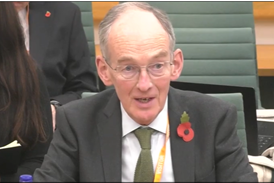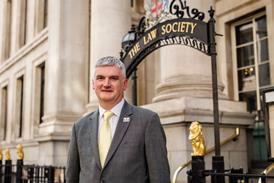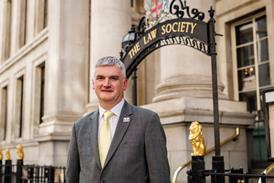Recent reports from the Forensic Science Regulator have recurring themes. Calls to provide the regulator with statutory powers can be traced back years, but just as important is the need to address the impoverished state of our forensic services.
Following the latest report (‘We can’t continue on this path’, news, 19 January), some commentators have found a nexus between the quality of forensic science and the closure of the Forensic Science Service in 2012.
However, it is illogical to connect the type of quality issues raised at Randox Testing Services in January 2017 with the closure of the FSS – just as it is fatuous to suggest adherence to quality standards is not common in private sector forensic science.
Quality standards are not enough. The problem the regulator identifies is seated deeper, in the business model. The vulnerabilities of that model are exacerbated by a government forensic science strategy which is incoherent and inadequate, and for which the Home Office must take its share of the blame.
Police services are resorting to insourcing forensic science in response to budget cuts. This, of course, reduces demand further and at least one forensic science provider has recently ceased trading.
Yet the business case for insourcing has not been tested or placed in the public domain for scrutiny. How can it be cost-effective to fully occupy a small group of specialists (operating within a regional police service) in an environment of sharply fluctuating demand? Similarly, how can the requirements of independent peer review be met where in-force units employ a small number of staff?
More to the point, where does this leave the defence when needing access to forensic services?
Cases tilted toward the prosecution seem to be an ever-increasing danger arising from the combined impact of insourcing and budget cuts. With most forces employing very stringent submission criteria, it is now unusual for the forensic scientist to have a full understanding of the case or even know what exhibits have been recovered.
In addition, items for forensic examination are often submitted by police piecemeal and sometimes weeks apart. The decisions on what to submit and in what order to examine/test items are predetermined by the force submission units against a menu of product codes.
The forensic scientist may only receive a swab taken from an item, meaning they can offer nothing other than the results of testing that swab. Providing advice on interpretation is impossible when the scientist does not see the exhibits or know what other evidence has been recovered.
Likewise, the defence may find it difficult to discern what evidence has been collected by law enforcement agencies but not submitted. Therefore the dangers associated with miscarriages of justice are likely to be linked to the non-submission of items as well as the cutting back of tests which are not considered to support the prosecution hypothesis.
It is one thing to identify mistakes which may have occurred within a forensic science laboratory – it is often much harder to spot non-submission. No amount of quality regulation seems likely to address this.
Previously, if evidence was overlooked or if other items in the case may support another version of events, one could reasonably rely upon the ‘defence team’ to identify these and further work may be conducted on their behalf. With the cuts to legal aid budgets the number of cases being submitted from the defence has dramatically reduced.
In this sense, we have the worst of both worlds – very targeted and often limited prosecution evidence being submitted for testing, but no opportunity for the defence to test their own hypothesis.
Quality standards must apply across the whole supply chain but they alone will do little to address the present, parlous state of forensic science.
Robert Green is director of undergraduate studies leading the forensic science programmes at the University of Kent



























3 Readers' comments